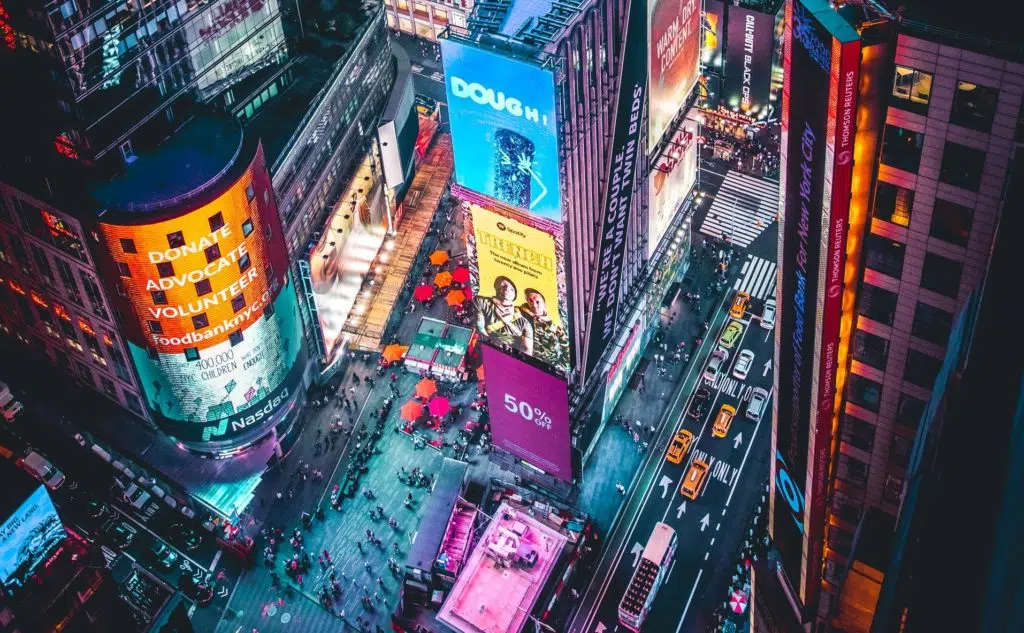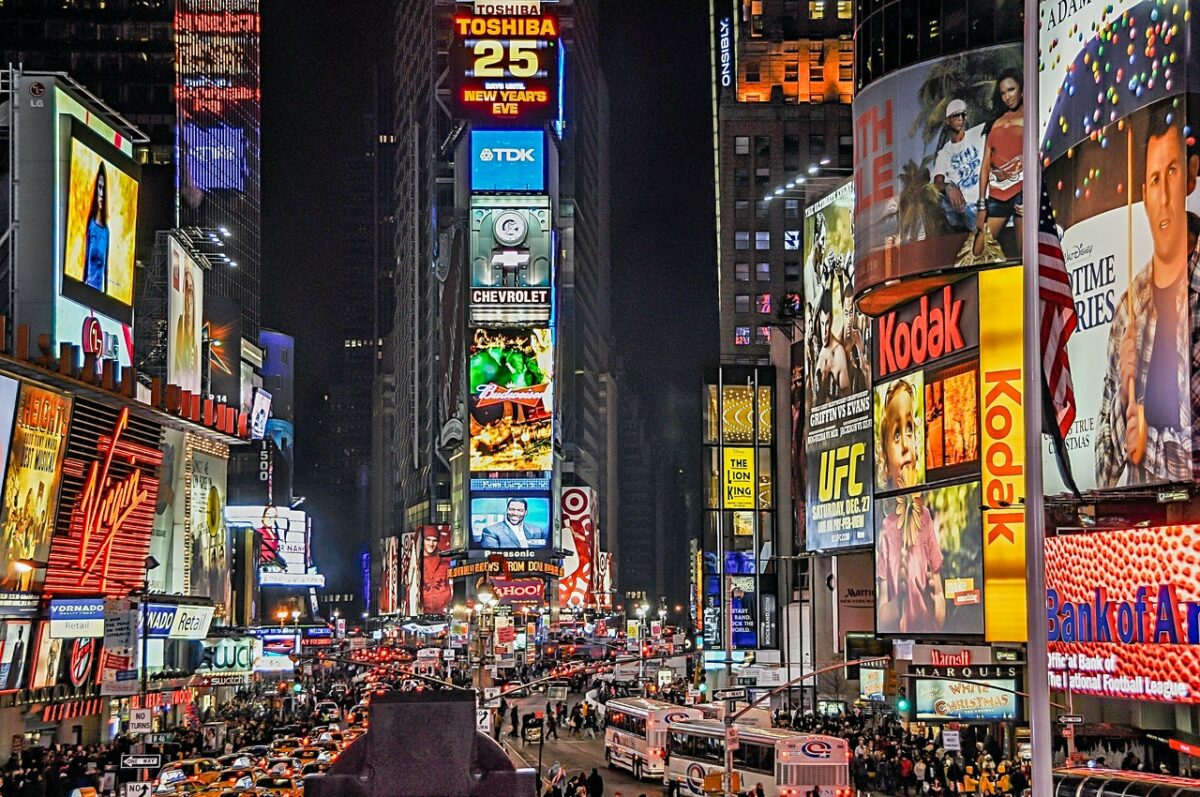Video is everywhere. It’s not just on your television, computer, or smartphone. Pay attention, and you’ll spot video displays on gas pumps, at airports, in stores…basically anywhere human eyes might land. That means you have almost endless opportunities to put your message in front of viewers. But video display trends shift rapidly. Unless you keep up, your video–and your message–could be left behind.
Business and property owners see video displays as an opportunity to sell more ads, reach more customers, or improve the overall visitor experience. Meanwhile, market factors are making video displays more affordable and more common. The Global display market size was valued at more than $148 billion USD in 2021. In the next five years, that number could reach $177 billion. And that’s a conservative estimate that takes the impact of the pandemic into account.

Factors influencing video display trends
Businesses are placing videos everywhere. Most are marketing videos, but some are purely for information or entertainment. Museums, public buildings, and even schools are using video displays to connect with their visitors. This method of enhancing customer and visitor experience is made possible by a few key factors.
First, the marketing space is crowded. Sharing messages in the form of videos can help capture viewer attention. It also allows a single space to share several messages depending on time of day, who’s watching, and other criteria. A single video screen can do the work of ten billboards.
Second, pixel sizes are shrinking. That means displays can be bigger without pixelation and smaller without loss of detail. Overall, there are more opportunities to share high-quality videos.
Third, LED screens are becoming less expensive. They offer better color consistency and easier maintenance than LCD or projection. That means they can be installed in more places with better results.
The speed of all this technological development is helping drive prices down. Already 8K resolution is replacing 4K. Soon the inorganic light emitting diode might make its way into everything from wall displays to home televisions as Pete Putman, President of Roam Consulting, LLC forecasted in this presentation to the Audiovisual and Integrated Experience Association.
What are the video display trends?
Say goodbye to the old days of rectangular video displays that are no more than glorified televisions. The latest video display trends are immersive, unique, and sometimes interactive. Consider these four trends.
- Shaped displays – Forget rectangular screens and common aspect ratios. Video displays can wrap around buildings and pillars. As foldable and wrappable displays become more accessible, the only limit to your video display shape will be your imagination (and maybe your budget.) For example, when we created videos for Madison Square Garden and their jumbotron, we included an accompanying animation that went on a ring mounted on the edge of the balcony, completely circling the arena.
- Immersive displays – We’ve had video walls for a long time, now video displays are spreading to floors and ceilings as well for a completely immersive experience. They’re being used for everything from advertising to art installations.
- Interactive displays – Instead of simply playing videos on a loop all day, interactive displays are responding to viewers. A hotel might have a video that plays when a new guest walks through the door. Geofencing can even customize the video to the user so every person who walks by gets a customized experience. With touch screen technology, viewers can interact directly with the content. QR codes and other touchless technologies are helping to make these displays more accessible for the post-pandemic world.
- Responsive digital signage – Signs that can change based on the weather, foot traffic and other outside factors are a game changer for retailers. GIFs, short videos, and animations capture attention and help convey important information on digital signage.
A note of caution: If you are considering installing one of these trendy displays, pause and think about what you plan to display on it. A video display is only eye-catching if it shares quality content with your guests or customers. Without quality content, a trendy display is nothing more than a way to spend a lot of money very quickly.
Planning videos for trendy displays
What do these trends mean for marketers and video creators? It’s vital to plan your video based on where it will be displayed. What looks great on a mobile phone might lose something in translation when moved to a large, shaped screen. To design your video with the display platform in mind, consider:
- Size. How big is the display? What are the dimensions? Are you dealing with any unusual shapes, folds or seams? What is the pixel size and how might that affect your final product?
- Surroundings. Will this display stand alone or be part of a more complex installation? Might parts of the display get blocked by people, vehicles, or objects?
- Level of Attention. Will the display location be noisy, crowded or distracting? What else is competing for viewers’ attention? Will viewers see your video display as an interruption, as entertainment, or as part of the scenery?
Thinking about the environment where your video will be displayed can help you make decisions about the design, story, color scheme, sound effects and other elements of your video. Remember that the trendiest option isn’t always the best choice for your brand. What matters is your message. Make sure you’re delivering it where your customers are and in ways they’ll want to engage with. For help creating a video for any display platform, contact the video experts at IdeaRocket.




